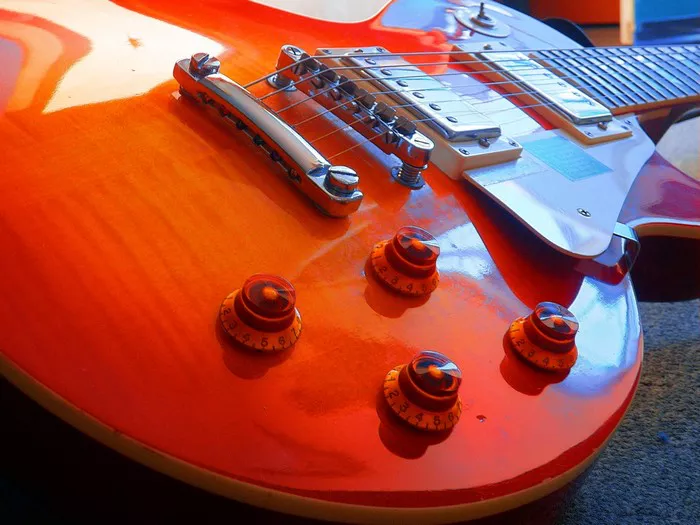In the vast symphony of musical chords, few possess the emotive depth and haunting allure of the D minor chord. From the mournful strains of folk ballads to the raw intensity of rock anthems, the D minor chord has woven its melancholic magic into countless compositions across genres. Mastering this fundamental chord on the guitar opens the door to a world of expressive possibilities, allowing players to evoke a range of emotions with just a few deftly placed fingers. In this comprehensive guide, we embark on a journey to unravel the secrets of the D minor chord, exploring its significance in music, precise finger placement, strumming techniques, practice tips, alternate fingerings, and a repertoire of common songs that showcase its poignant beauty. Whether you’re a novice strummer or a seasoned guitarist seeking to deepen your musical prowess, join us as we delve into the rich tapestry of sound woven by the D minor chord on the guitar.
Understanding D Minor Chord
The D minor chord is a fundamental chord in music, commonly used in various genres such as rock, pop, blues, and classical. Comprising the notes D, F, and A, the D minor chord is characterized by its melancholic and somber tone, adding depth and emotion to musical compositions. Understanding and mastering the D minor chord on the guitar is essential for any aspiring guitarist, as it opens up a plethora of musical possibilities and enriches your playing experience.
Finger Placement
To play the D minor chord on the guitar, follow these detailed instructions for finger placement:
- Start by placing your index finger (1st finger) on the first fret of the high E string (the thinnest string).
- Next, position your middle finger (2nd finger) on the second fret of the G string.
- Lastly, place your ring finger (3rd finger) on the third fret of the B string.
Ensure that each finger is pressing down firmly on its respective fret, producing clear and crisp notes. Keep your fingers close to the frets to minimize buzzing and achieve optimal sound quality.
Strumming Technique
When strumming the D minor chord on the guitar, begin from the fourth string (D string), skipping the sixth string (low E string). Aim to strum downward smoothly, maintaining a consistent rhythm and applying just enough pressure to produce a resonant sound. Avoid strumming the sixth string, as it will result in dissonance and disrupt the harmony of the chord. Focus on precision and control, gradually increasing your strumming speed as you become more proficient.
Practice Tips
Mastering the D minor chord requires diligent practice and patience. Here are some tips to help you overcome common challenges:
Finger Stretching: Practice exercises to improve finger flexibility and reach, gradually extending your fingers to cover multiple frets comfortably. Start with simple stretching exercises and gradually increase the difficulty as your fingers become more limber.
Avoiding String Buzz: Pay close attention to your finger placement and pressure, ensuring that each finger is pressing down firmly on its respective fret. Experiment with different finger angles and positions to find the optimal technique that minimizes string buzz.
Slow and Steady Progression: Practice transitioning smoothly between the D minor chord and other chords, starting at a slow tempo and gradually increasing speed as you gain proficiency. Focus on accuracy and precision, rather than speed, to build a solid foundation.
Utilize Metronome: Practice with a metronome to improve your timing and rhythm, maintaining a consistent beat as you strum the D minor chord. Start at a comfortable tempo and gradually increase the speed as you become more comfortable.
Alternate Fingerings
For users with different skill levels or hand sizes, alternative fingerings for the D minor chord may be more comfortable or practical. Experiment with the following variations to find the one that suits you best:
Barre Chord: Use your index finger to barre the first fret across all six strings, then place your middle finger on the second fret of the G string and your ring finger on the third fret of the B string. This variation provides a fuller sound but may require more finger strength.
Capo Variation: Place a capo on the fifth fret of the guitar neck and use the standard finger placement for the D minor chord. This variation raises the pitch of the chord, allowing you to play in higher keys without changing the finger positions.
Common Songs
Practice playing the D minor chord by learning these popular songs that feature it prominently:
“Knockin’ on Heaven’s Door” by Bob Dylan: This iconic song uses the D minor chord throughout, making it an excellent choice for practicing chord transitions and strumming technique.
“Hurt” by Johnny Cash: Known for its haunting melody and emotional lyrics, “Hurt” incorporates the D minor chord to convey a sense of melancholy and introspection.
“House of the Rising Sun” by The Animals: A classic folk song that prominently features the D minor chord, “House of the Rising Sun” is a timeless piece for guitarists to master.
“Wish You Were Here” by Pink Floyd: This beloved ballad by Pink Floyd utilizes the D minor chord in its hauntingly beautiful chord progression, offering a great opportunity to practice dynamics and expression.
Conclusion
By mastering the D minor chord on the guitar, you’ll expand your repertoire, enhance your playing skills, and unlock new musical possibilities. Practice regularly, experiment with different techniques, and enjoy the journey of becoming a proficient guitarist.


